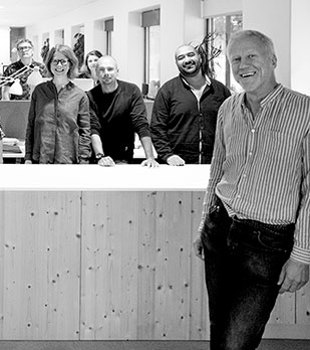UPPSALA, SWEDEN Climate issues are moving up the agenda ahead of the UN climate change conference COP21 in Paris. The debate tends to focus on global warming as a phenomenon and, even now, mankind’s contribution to it. There are strong indications that this year we’ve exceeded one degree Celsius of warming. The window for achieving the political goal of a ‘two degree limit’, which all the countries of the world, at least on paper, are agreed on, is closing ever faster according to a report by the UN’s Intergovernmental Panel on Climate Change.
With the promises on emission cuts that the nations of the world have submitted to the conference in Paris, global warming is on its way to 2.7 degrees in the best case scenario. And this assumes that all the countries really do what they promise, which hasn’t always been the case. While the countries are agreed that we need to keep warming below two degrees, it seems that none of them are prepared to take sufficient action.
The wealth of figures and discussions on this subject might seem quite abstract to many people, but they’re important. They actually tell us whether or not we’ll be able to have a functioning civilisation in the future. In practice, the climate question boils down to the fact that almost 90 percent of the oil, coal and natural gas that we could extract in the future needs to be left in the ground. If we extract it, we’ll also burn it, and that will take warming above two degrees, which we really need to avoid!
Without fossil fuel, our society will become more dependent on the forest than it is today. To stop emissions from all the world’s coal-fired power stations, there will have to be an increased use of biofuel, and that will come mainly from the forest.
In the future, the use of trees will not be confined to construction materials, paper and biofuels. A number of plastics are being replaced with biodegradable substitutes and the textiles industry is also increasingly looking to the forests for its raw materials.
If the nations of the world don’t manage to agree on large and rapid enough emission cuts, it will become even more important to make best possible use of the trees in our forests. As long as the forests are growing, they can capture carbon from the atmosphere, and thus also deal with some of the emissions from fossil fuels. In theory, the forest can help to mitigate the greenhouse effect. But that depends on our society ensuring that the carbon captured by the trees is stored, and not used for fuel or consumable materials. By using wood as a construction material, we can store carbon for hundreds of years.





























